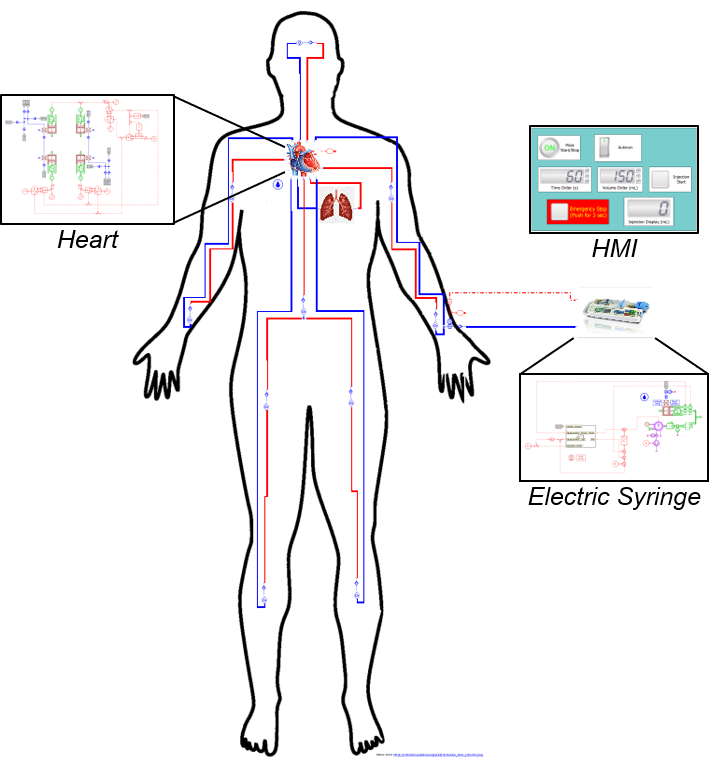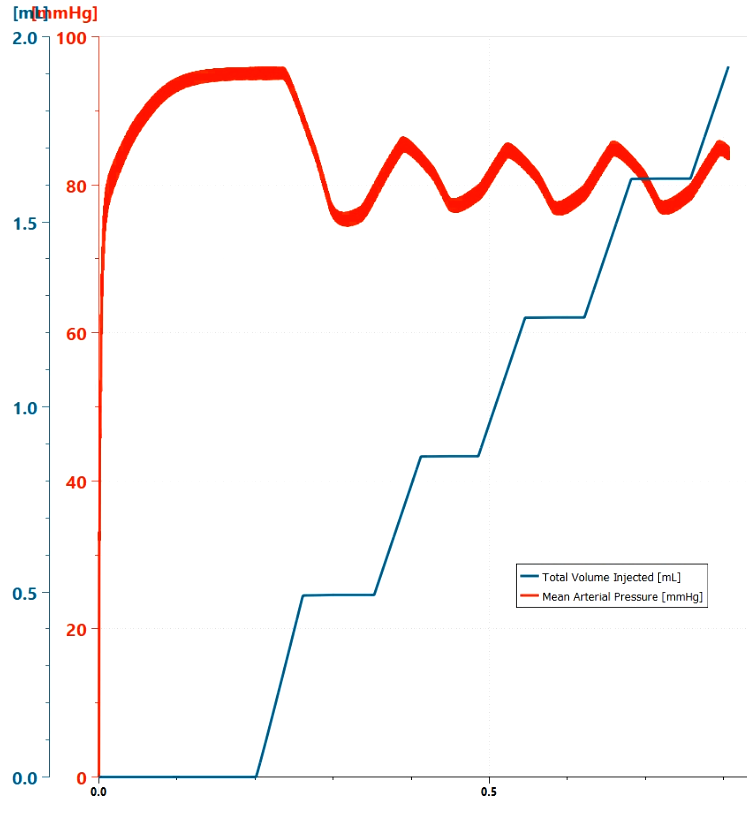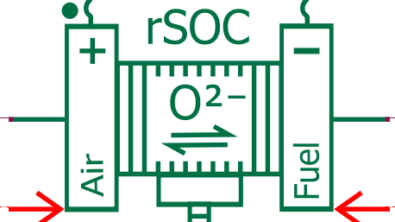The 10 most crazy System Simulations
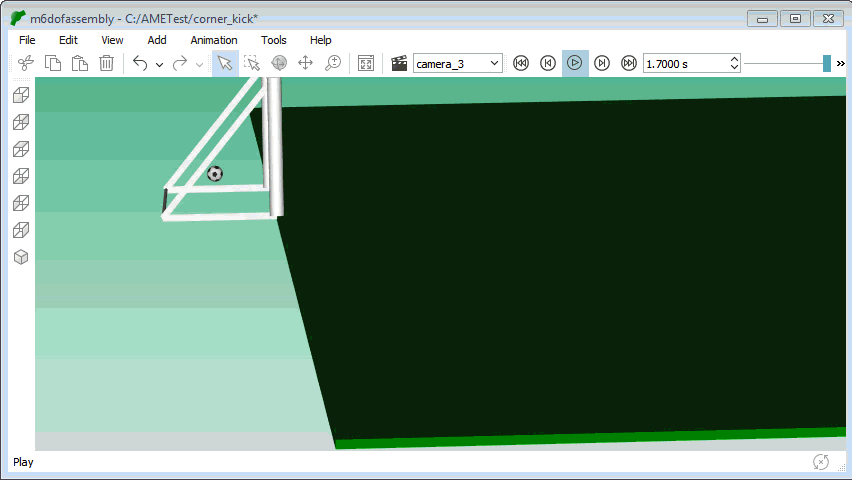
Inspired by Simon Fischer and his “10 secrets to a stunningly fun CFD simulation“, we decided to explore our Simcenter Amesim archives and extract the most exotic, weird, funny, yet useful simulations we ever did! You might ask yourself: “Why did they even spent time on this?” or “How hard was it to get results?”, so did I. But the fact is that system simulation can do much more than cars, planes or ship’s engineering! Here are 10 crazy things you can do with System Simulations.
1. Simulate everything but the kitchen sink
The kitchen appliances didn’t wait for system simulation to flourish, but the later helped to minimize their energy consumption when it came to be important for consumers. Let’s see some examples by going through a typical day at home.
The first thing I do when I wake up is to get a good cup of coffee. I like it pretty hot and “lungo”, and I need it as quickly as possible! Then, I take a yoghurt out of my fridge, it must not be too cold (I know, I’m picky). When I’m done with my breakfast, I usually do some laundry and I must say that the tumble dryer is a fantastic invention to get things done! Finally, I would prepare lunch. What about a sweetly roasted turkey? The oven temperature and cooking time must be carefully chosen.

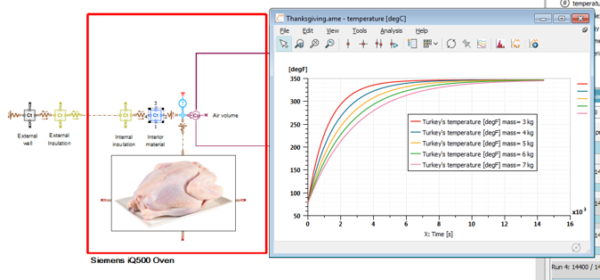
2. Exercise everyday
It’s not only about eating (getting calories), it is also important to do some exercise (burning calories). The minimum is about walking 30 minutes per day, maybe start by walking the dog?
I don’t have a dog, but I like football! Watching the games of Olympique Lyonnais, my favorite team, is clearly not enough, so I use to go on the (virtual) field and practice my corner kicks.
Finally, the debate is opened as to whether this classifies as a sport or not, but anyway bowling is something that can be simulated using a Multi-Body Simulation (MBS), which can be considered a System Simulation.
Here, different bodies of balls and pins are connected. We had to take care about the positioning and the sizes of the bodies, regarding the bowling standards. We created a Python app called “bowling shot generator”. This generator produces random values for ball positioning, spin and force.
3. Keep your child soul
In these difficult times, it is important to lay back and find some comforting things to think about, like your childhood Christmas times. Just remember how magical the atmosphere was, how excited you were about finding what Santa Claus brought you during that night… To make this memory more tangible, a Santa Claus simulator has been developed!
Rollercoasters are something I also use to love during my childhood! My body doesn’t like it anymore, but I like remembering the loud music, the flashy lights and the adrenaline pumping when the wagon is at the top of the hill! Here is another memory that can be modeled using System Simulation. It brings additional metrics, like how many G’s your body takes, your top speed and how high you go (and of course, how safe it is).
4. Be creative
Creating Art with a system simulation tool is not a trivial (nor useful) thing. In this example, the application used for cam design (for valvetrain applications) was borrowed by my 6 years old to draw nice flowers and shapes! Do you remember the Spirograph®?
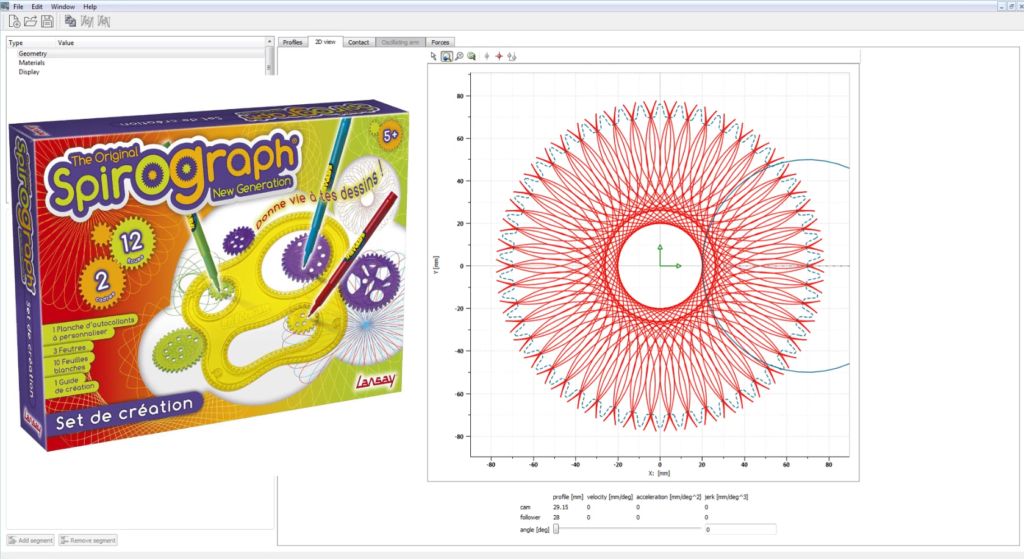
5. Do some gardening
If you’re lucky enough to have a garden, take care of it! Getting closer to mother nature is a way to relax and to clear your mind. Brrrrrrrrrrr!
And sometimes, a lawn mower just isn’t enough, and you need to switch to bigger gears! Go to the next-heavy duty rental shop around the corner and get a “forwarder”, to get rid of the fallen trees in your backyard. Don’t forget to make sure that the machine hydraulics are properly sized for the duty cycle you want to execute!
6. Take care of your health
We all have suffered in one way or another from the pandemic. We also all understood the importance of medical research and development, science and the World Health Organization to fight this crisis in a comprehensive and sustainable manner. And here again, System Simulation can be an asset to shorten research lead times, reduce development costs and make medical products more affordable and reliable. Here is a simulation of the human body used as boundary condition for an anesthesia injection pump model. The anesthetic drug injected to the body with an electric syringe is regulated based on the heartbeat and the blood pressure. Different patient physiognomy and their drug reaction can be easily assessed and the reliance on the surgeon to monitor and control the injection rate is decreased.
The model was made with RGB medical devices in the context of the AQUAS project, which aims to improve the safety, security and performance of connected systems during the whole product life cycle.

7. Travel the world (as if there was no pandemic)
One of my favorite hobbies is to travel (therefore I like visiting customers, all around the world). So, you can imagine how frustrated I am now! To reduce this frustration and travel virtually, I use System Simulation. It also helps me to understand what happens when I travel. When I take a ship to cross a lake or a sea, what are the forces in action, why do I get sick, how long would the ship take to save me if I fall into the water?
Similarly, when I take a airplane, how the fuel moves into the wings when we make a flat turn? You might want to simulate this when you’re an engineer (or just curious), and that the flight is quite long.
8. Get back to basics
Abraham Lincoln
If you give me six hours to chop down a tree, I’ll spend four hours sharpening the axe.
Having to stay home and not being able to do anything else could be an opportunity to “sharpen the saw”. And again System Simulation, in particular when it is based on bond graph theory, is really useful to understand principles of physics applicable to a given system. Having a better understanding of your system allows you to save some time when analyzing the results of a simulation or predicting the consequence of a design change. Here few examples of really basics things of our life explained using of System Simulation.
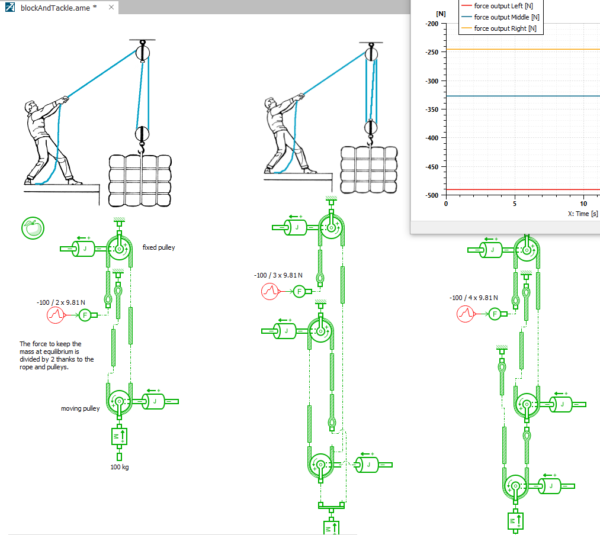
A block and tackle system is made of two or more pulleys with a rope or cable threaded between them, usually used to lift or pull heavy loads. The block and tackle system is used where a large multiplication of the applied forces is desirable. The mechanical advantage of a tackle dictates how much easier it is to haul or lift the load. If frictional losses are ignored, the mechanical advantage of a block and tackle is equal to the number of parts in the line that either attach to, or run through the moving block, or the number of supporting ropes.
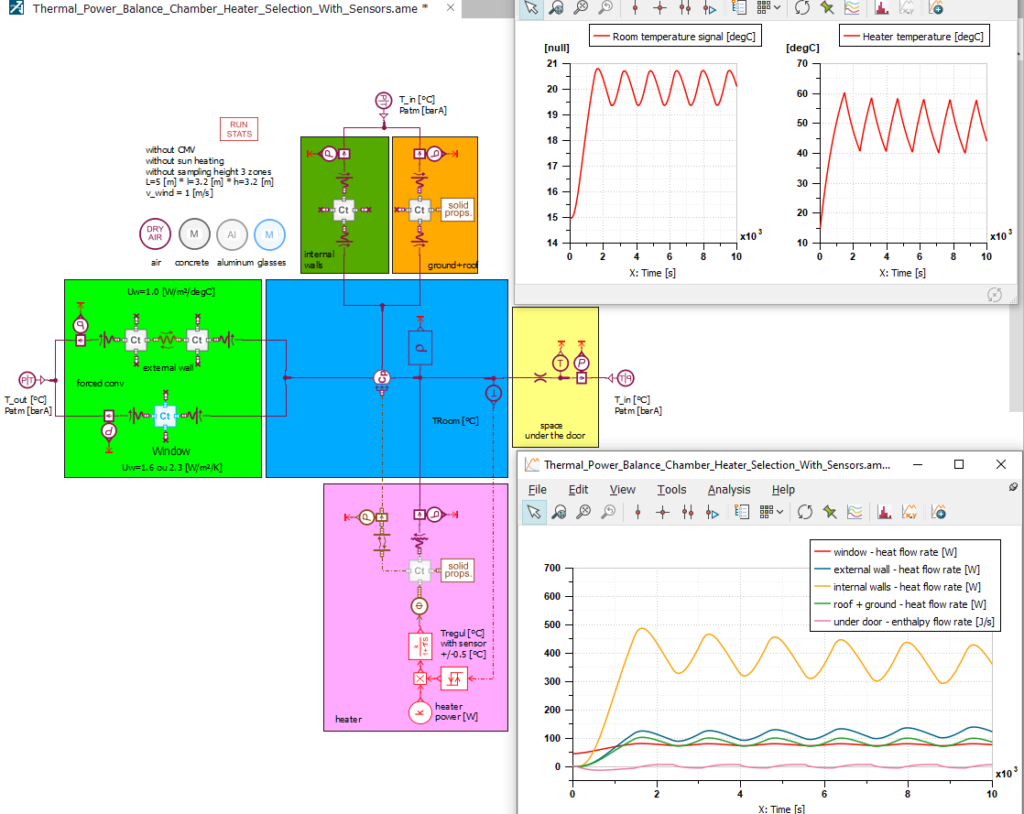
Even if the heater can maintain the temperature of the room at nearly 20°C, there is a real problem of thermal efficiency of the room, since about 800 W out of the 1500 W delivered by the heater are lost.
9. Robots rock
Robots are both frightening and fascinating at the same time! The progresses made in this area will hopefully benefit the society. But if it turns bad, like in the Terminator movie, we can still find a way to terminate robots using System Simulation.
10. Choose a capable tool
Doing crazy, weird or funny system simulations requires a capable toolset, especially if this is not a full-time job for you! The tool must be truly multi-physic, with a fast solver and a visual post-processing, guess which one?
Learn more about Siemens Simcenter Amesim
Simcenter Amesim is the leading integrated, scalable system simulation platform, allowing system simulation engineers to virtually assess and optimize the performance of mechatronic systems.
